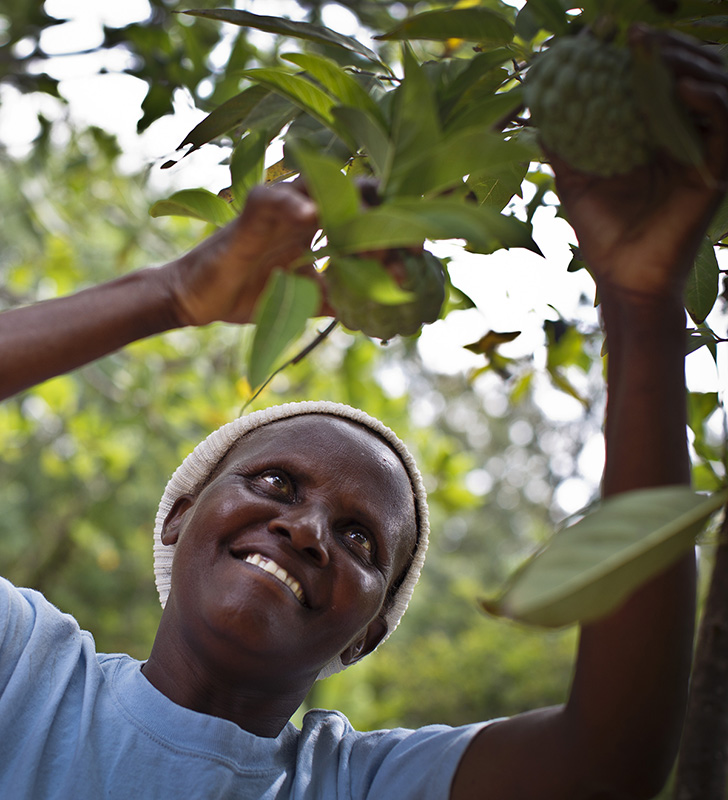Adopting financing as part of a broader set of interventions to assist farmers in rural areas is one of the holistic approaches proposed by Louis Kasekende, the Deputy Governor, Bank of Uganda.
This is a broad appeal to Africa’s finance institutions to support farmers and increase agriculture production. Smallholder farmer face enormous challenges such as vagaries of weather, sub-optimal infrastructure, lack of information and technical advice as well as limited access to appropriate inputs and market opportunities.
“Therefore, any effort aimed at modernizing agriculture including financing instruments must target the vulnerabilities of the typical African farmer,” he says. “The approach should include strengthening the management capacities of farming groups, enhancing quality, and dealing with coordination inefficiencies in the provision agriculture services.”
Other interventions include improvements to rural infrastructure, provision of extension services, strengthening legal regimes to accommodate land rights, access to quality seed from research institutions among others.
Kasekende made the call while delivering a keynote address on the subject of the suitability of present agriculture finance and investment instruments to realize the much-awaited green revolution in Africa.
During a two-day conference themed on Making Finance Work for Agriculture in Kampala, Uganda organized by the Uganda Agribusiness Alliance (UAA) with support from AGRA, NEPAD, Grow Africa and the African Union.
Kasekende said a review of the characteristics of the agriculture sector and interventions undertaken in Africa was required to understand and plan for the financing needs.
“What is common across the continent is that African agriculture is largely dominated by smallholder farmers so any solution to transform agriculture have the solutions that are appropriate for farmers,” he noted.
Citing the example of Uganda, where according to the 2014 National Population and Housing Census, nearly two thirds of the working population is engaged in subsistence agriculture, the sector is identified with low productivity compared to other sectors and regions of the world.
“Agriculture value added per one worker is estimated at about US$ 1,316 in 2016 for sub-Saharan Africa, which is less than twenty percent of the productivity level for industry and service sectors,” Kasekende added.
Compared to other continents, he added that Africa’s productivity is only about one third of the level for East Asia and Pacific, and only about two percent of the productivity level in the United States of America.
This is despite the traditional processes of structural transformation shifting labor from low productivity and subsistence agriculture to high productivity in the manufacturing sector. However, for most African economies, this level of transformation remains elusive.
Instead, labor is employed predominantly in the informal and subsistence agriculture sectors with the marginal shift of labor directed towards low productivity services sector rather than manufacturing.
“That is why agriculture output and manufacturing as a share of GDP for sub-Saharan Africa have both declined from above 20 percent in the 1980s to the present average of 16 percent and 10 percent, respectively,” he added.
Despite the less impressive state of African agriculture, on-going efforts have been identified to increase financial support to the sector. These include specialist financial institutions like agriculture banks, direct credit extension and guarantee schemes, warehouse receipt systems, direct farmer input supplies, insurance schemes and various forms of tax incentives. However, these interventions have still not created the much-desired transformation.
Where is the missing link and what else can be done?
The deputy governor explained the above services can only be accessed by farmers in production with sufficient output for sales so they generate the cash flow to pay off credit or to be considered as credit worthy by a financial institution.
Financial institutions also require a moderately sophisticated farmer with entrepreneurship skills and literacy, one who is able to keep books of accounts and has some form of collateral including land ownership title.
“Clearly, the majority of farmers on the continent do not meet this sort of profile,” says Kasekende. As earlier indicated, most farm output, at least from the Ugandan experience, is from small acreages and subsistence farming.
“If we agree that agriculture financing is not an end in itself, we ought to look at the broad supportive mechanisms that are required to liberate the majority of the smallholder subsistence farmers, from informal, low yielding agriculture to formal commercialized agriculture,” he added.
What other interventions will make African agriculture productive?
Erick Sille from the NEPAD Agency explained that at continental level, several commitments were made by heads of state to advance the agriculture agenda and agriculture finance in particular. In 2014, the Comprehensive Africa Agriculture Development Program (CAADP) was agreed upon by African heads of state, in Malabo reemphasizing the importance of financing agriculture.
To that effect, heads of state committed to set aside ten percent of their budgets for agriculture. “The second of these commitments were that African agriculture must grow at a rate of six percent per annum,” said Sille.
However, among those countries that made the commitments, only ten countries out of a total of 47 have been able to meet the commitment of ten percent investments in agriculture.
“That is why it is important to engage the private sector; to create the enabling environment to make their own investments in the sector,” he adds. “Government should stimulate initiatives that promote good policies that are transparent and predictable to allow private sector in agriculture financing.”
Is there need for more food?
According to Sille, food production must increase by about 60 percent in the next 15 years to feed the growing population and also cater for the food market valued at more one trillion US Dollars by 2030.
“Therefore, we hope to find solutions from meetings such as this to financing agriculture targeting smallholder farmers in production and responding to the food demands on the continent by 2030,” he concluded.





